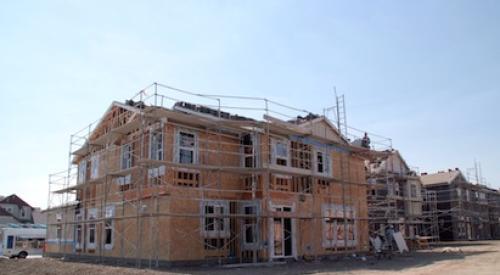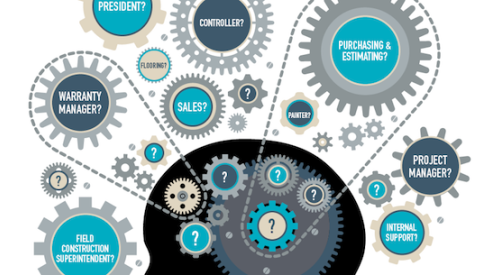Here is a scenario to challenge your staff and in the process, discover some profound insights on home building strategy, especially in view of the recent slowdowns in so many markets.
Get the staff together; ask if any among them has all the money they want. There won't be a single hand. Since they clearly have the required motivation, you give them the tools they need to make a nice score — a loaded .38 special, a ski mask and a get-away car.
Now for the big question. They must choose choice between two robbery targets, a 7–11 or the Bank of America. Break them into small groups and have them discuss their goals, the pros and cons and make them reach a group consensus on their target. This can be difficult, amusing and revealing.
The 7–11 StrategyThe 7–11 strategy is quite compelling. Very few convenience store robbers are caught, on a case-by-case basis. That's encouraging! The bad news is that the average take might be a couple of hundred bucks. Disappointing. But you get your Slurpee, Twinkies, beef jerky, Marlboro's and a little cash. Quick in-quick out.
When you knock off a 7–11, who comes after you? The local guys, and not to disparage the hometown constabulary, but most of them never applied to the FBI Academy. If you get in and out of a 7–11 quickly and hightail it to the next county, your chances are good. For a couple of days you've got a small wad of cash and a belly full of junk food.
The trouble is neither satisfies for very long. Come Monday morning, you realize your Saturday night heist won't get you through the week. It's time to find another 7–11. Rob enough of them and sooner or later, something goes wrong. Either a local cop pulls in right when you are pulling out or Lenny behind the counter has chosen this day to finally make a stand, and his .357 magnum trumps your .38, hands down.
The Bank Heist StrategyBank heists, on the other hand, frequently yield $5,000 to $10,000 — with potential for six or even seven figures. You can figure at least the take from a hundred 7–11's in one job! You aren't going to score any beef jerky — maybe some bad lobby coffee and stale cookies — but do you care? You're having dinner tonight at Charlie Trotter's and dropping $500 on groceries at Kroger on the way home. That is if you overcome the nagging obstacles thrown in your way.
Bank of America has cameras and, unlike those at the convenience store, these work! The bank also has alarms, marked bills and those annoying, booby-trapped money bags with dye-bombs. And when you rob the big bank, while the local guys are finishing their donuts, the Feds have already sprung into action. Their record? I once heard on Larry King that 80 percent are caught within 30 days. More than 95 percent within a year. I don't like those odds.
Then there is all the planning you have to go through. To take the big bank, you need to study, plot, plan and execute flawlessly. You also need an accomplice or two. So now you are a manager, which means "people problems."
But there's something even scarier. The big banks have a 60-year-old armed guard named Frank, recently retired from Acme Plant Security, where not once in 30 years did he get to fire his gun. So as you are running out of the bank, Frank eyeballs your back and for the first time in his life gets a glimpse of the uppermost level on Maslow's Hierarchy of Needs. Your sacrifice equals Frank's self-actualization. He smiles and pulls the trigger.
Your ChoiceTough decision, isn't it? When you ask a group, most adopt the risk-taker's bravado and claim they are going for the big bucks at the bank, even though it's far more difficult.
In real life, the opposite is true. When in serious need of money, like most criminals, we go for the short-term, quick hit, no-brainer, easy route. Is it any different in home building?
Right now, many markets are slowing down, often for the first time since the early 1990s. The growth and volume that has covered our sins is drying up. Builders are concerned and rightly so. The renewed focus on cost reduction is intense.
So where do you find the money? What can you cut that will show quick results and impress the boss — or the board? Let's consider the targets.
Money TargetsFor most builders, house costs run between 50 percent and 60 percent of sales. That's a lot of money, sort of like the Bank of America. And like the bank, it can be hard to get. You have to analyze, you have to plan and you have to train your people in methods to find the waste, recover it and make the changes permanent. We are talking about serious product and process improvement
Here's the rub: the only way to achieve the greatest gains is to work in an open, high-trust and mutually beneficial mode with your key suppliers and trades. What does that mean?
- Training everyone to work together as a team, analyze problems and solve them
- Developing solid, long-term relationships that are based on total cost rather than initial price
- Rethinking the traditional builder methods of hammering suppliers and trades for cost reduction, which actually inhibit the very goals you are pursuing
Do we have to go to all that trouble? Isn't there something easier? Absolutely, and it's sitting there right in front of you. No teamwork, no planning, hardly any thinking required. Just fire off the memo today and the money starts rolling in tomorrow. It's home building's equivalent of the 7–11 and its called overhead.
The Overhead LineOverhead usually averages between 5 percent and 6 percent for most builders — about one tenth of house costs. That's not much money in comparison, but it's so easy and you get it right now. Put a freeze on salaries, bonuses, recruiting and hiring. Kill the trip to Six Flags and the summer picnic and golf outing. That Habitat project can wait until next year. Cut the supplier/trade breakfast and cancel all the training — especially the training. So what if you said it was part of your culture, part of the way you do business? You didn't say when.
Today, all over North America, it's happening. Builders are slamming their overhead, and the impact is being widely felt. You may want to argue that some of those cuts are appropriate and that may be. I wouldn't spend money recruiting new staff if I am laying off people.
Maybe, just maybe, if you were more of a Bank of America guy than a 7–11 guy, none of that would be necessary. There is so much money being wasted in the building and development process. That's where you should be looking first — and hardest. Without the people, without the training, without the supplier and trade relationships, though, you'll never find it.
The 7–11 strategy is little more than a short-term, junk-food high. You have genuine overhead issues? So deal with them, but stop overreacting. You think you've solved a problem but it's the proverbial gift that keeps on giving. You demoralize your organization and inhibit your ability to achieve the kind of product and process improvement that leads you to the real money.
Drive right on by that tempting convenience store and get yourself down to the bank. Remember, it takes more than a memo. It takes hard work and more of what you were hired to do. Be a manager. Be a leader. Be an executive. Remember the words of Willie Sutton, the infamous bank robber when asked why he robbed banks. He replied, simply, "Cause that's where the money is!"
| Author Information |
| Scott Sedam is President of TrueNorth Development, a nation-wide consulting and training firm focused on quality, process improvement and organizational development. He can be reached at scott@truen.com. |












